Header bidding is the latest advancement in the world of programmatic advertising.
It expands upon the traditional “waterfalling” method with an even more efficient process that better maximizes the value of ad inventory for publishers.
If you’re not sure what waterfalling is or how it works, we suggest you read our previous post before going forward.
The Fault in Waterfalling
With the implementation of automation, comes efficiency. Unfortunately, it became clear that waterfalling also had its flaws.
Due to its sequential nature of considering bids, waterfalling does not always yield the highest return on ad inventory, because it does not consider all bids made.
Header bidding, on the other hand, introduces competition among buyers, and considers direct buys alongside programmatic, to ensure the highest possible return on any ad placement.
How exactly does it work?
Hopefully, by this point, you’ve read our Beginner’s Guide to Programmatic Advertising. Here, we’re going to break header bidding down in a similar fashion…
In the case of header bidding, all ad placements are available for bid. There is no need to determine what is actually for sale to buyers on a webpage.
That means that the seller needs to set a price floor for each individual ad placement, separately.
Once price floors are set for each placement, automation officially begins.
Upon the loading of the webpage, a request is sent to an ad server, whose job is to act as the mediator between ad exchanges and webpages.
Like in waterfalling, ad exchanges are individual marketplaces that hold their own brand auctions.
Unlike waterfalling, however, the ad server reaches out to multiple ad exchanges, simultaneously, considering all bids, all at once.
Once all bids have been made, each ad exchange will present their highest received bid to the ad server.
The ad server takes those bids, and compares them to pre-existing direct buys for the placement at hand.
In short, the ad server weighs all possible options, enforces the price floor, and chooses the overall highest payment for a single placement.
This is simply a means of ensuring the highest return on every single ad placement.
Incorporating direct buys eliminates the risk of having all placements entirely up for bid.
So, in the end, regardless of the origin of the number, the ad server will always choose the highest payment for an ad placement.
If no bid exceeds the pre-existing direct price, then the ad is placed direct.
Once the price floor and pre-existing directs are exceeded by bids, however, the brand with the highest bid wins the placement.
Header bidding maximizes the potential return on all ad inventory for publishers, by considering every exchange, and every bid, all at the same time.
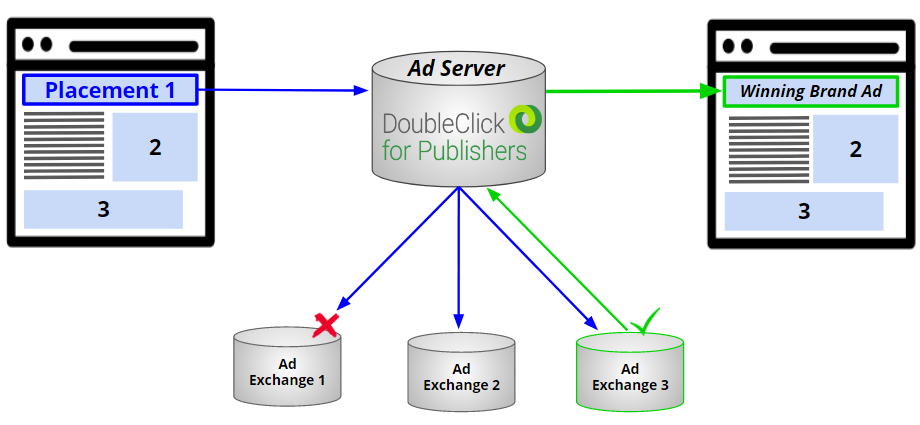
Let’s break the graph down with an example:
It’s important to note that this example is for a single ad placement.
All placements are technically available. So, if there are three placements on a webpage, this process happens three times, simultaneously, but separately.
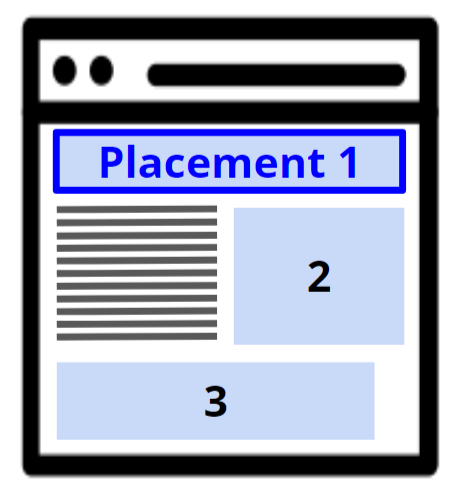
In this example, we’re going to only look at how Placement 1 is filled.
To begin, the seller sets a $3.00 price floor for Placement 1.
As the webpage loads, a request for Placement 1 is sent to an ad server. The ad server in this case is DoubleClick for Publishers.
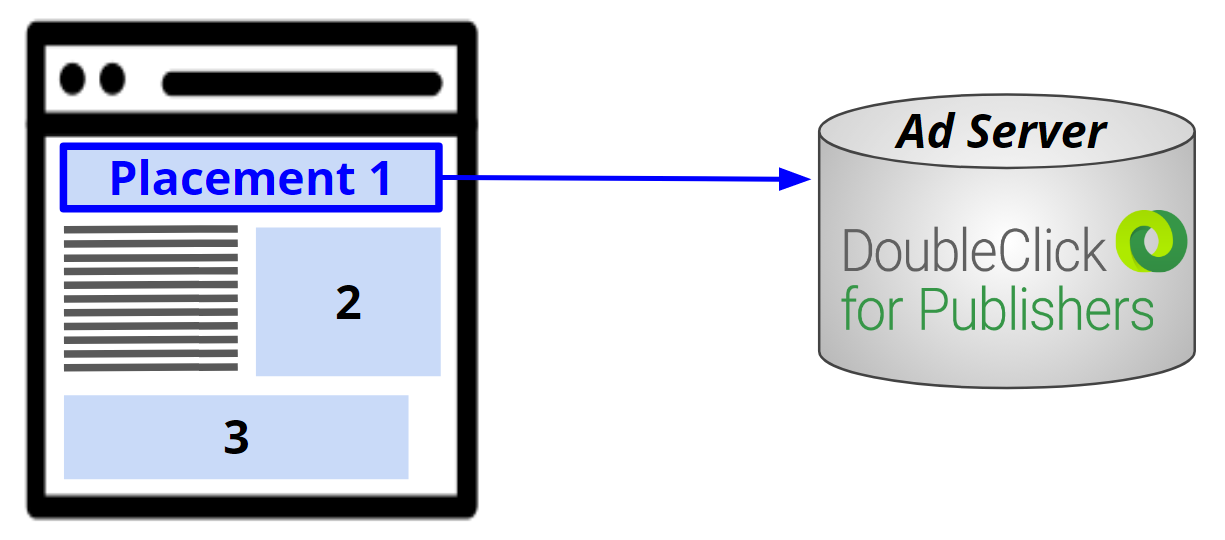
Upon request, DoubleClick reaches out to Ad Exchanges 1, 2, and 3, simultaneously.
(Note: The number of ad exchanges can vary. The process is not limited to just three ad exchanges.)
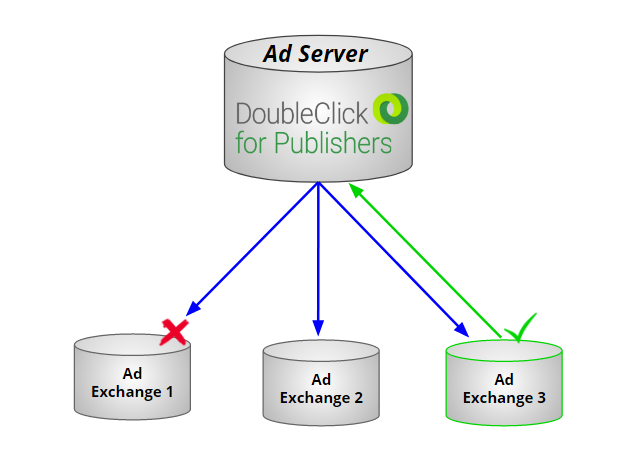
Ad Exchange 1 presents a high bid of $2.50, which does not meet the price floor, immediately ruling them out.
Ad Exchanges 2 and 3 both exceed the price floor. Ad Exchange 2 presents a high bid of $3.50, while Ad Exchange 3 presents a high bid of $4.00.
DoubleClick sifts through, and sees that the highest bid is $4.00, from Ad Exchange 3.
This is where competition is introduced into the process. Doubleclick takes that $4.00 bid, and compares it to pre-existing direct buys for Placement 1.
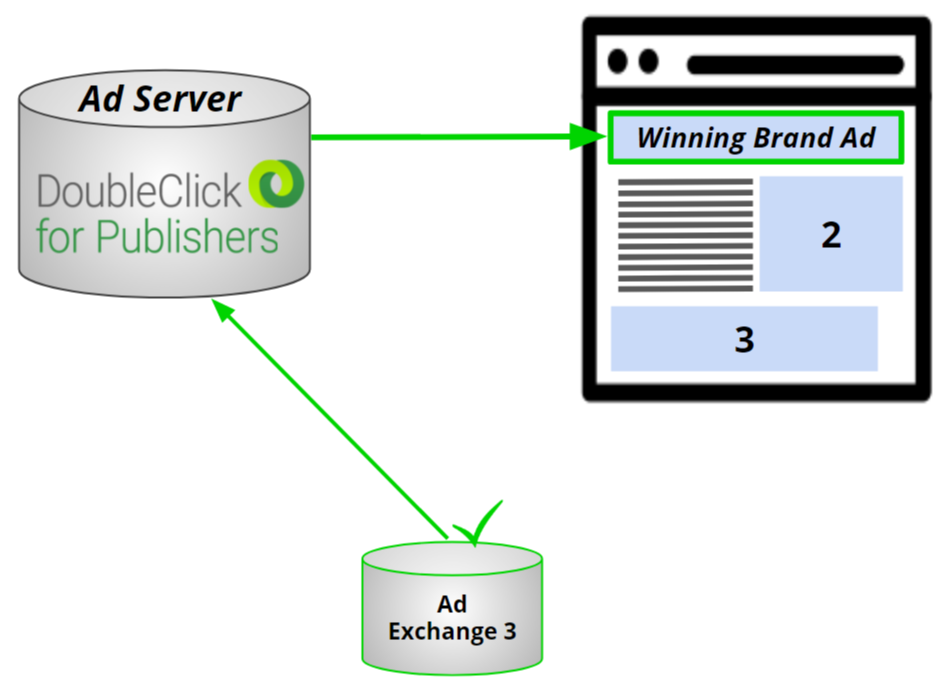
DoubleClick sees that the bid is higher than the pre-existing direct.
Therefore, the brand that made the bid of $4.00 wins the placement, and their ad will appear on the webpage.
In waterfalling, Ad Exchange 3 would never have been contacted by the ad server, essentially left waiting in line.
Because of the all-inclusive nature of header bidding, however, Ad Exchange 3 presents the highest overall bid, truly maximizing the value of Placement 1.
Automation is all about efficiency. And while waterfalling was a step in the right direction, header bidding is an even greater step towards maximum efficiency for publishers.
The time that it used to take for ad sellers and buyers to negotiate and agree on a deal, can now be used to spend more time building strong business relationships and close deals.
In a forthcoming post, we’ll elaborate a bit more on the header bidding process, and explain, in more detail, the importance of, and how to choose your price floor.
In the time being, check out our Guide to Understanding Programmatic!



